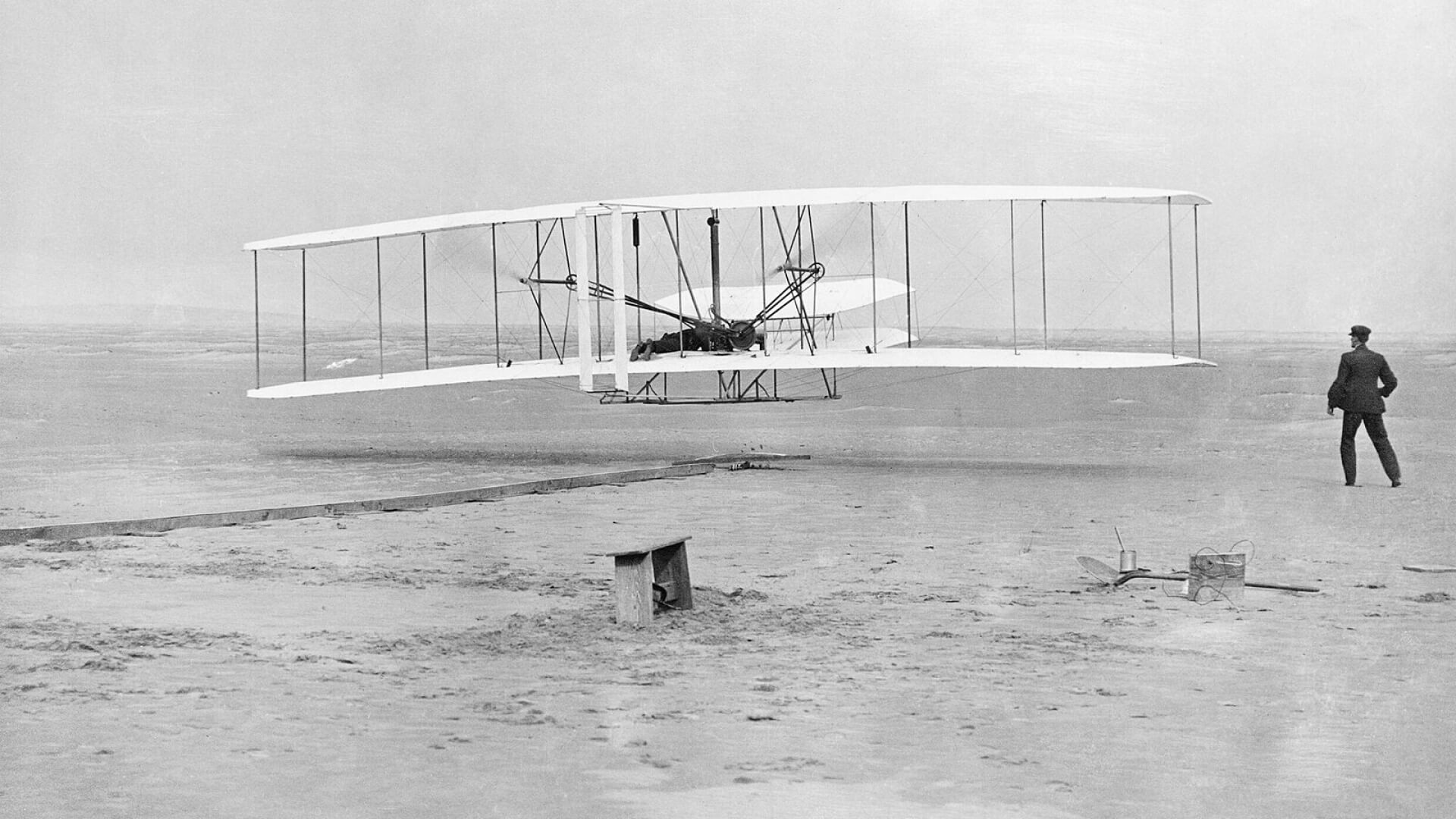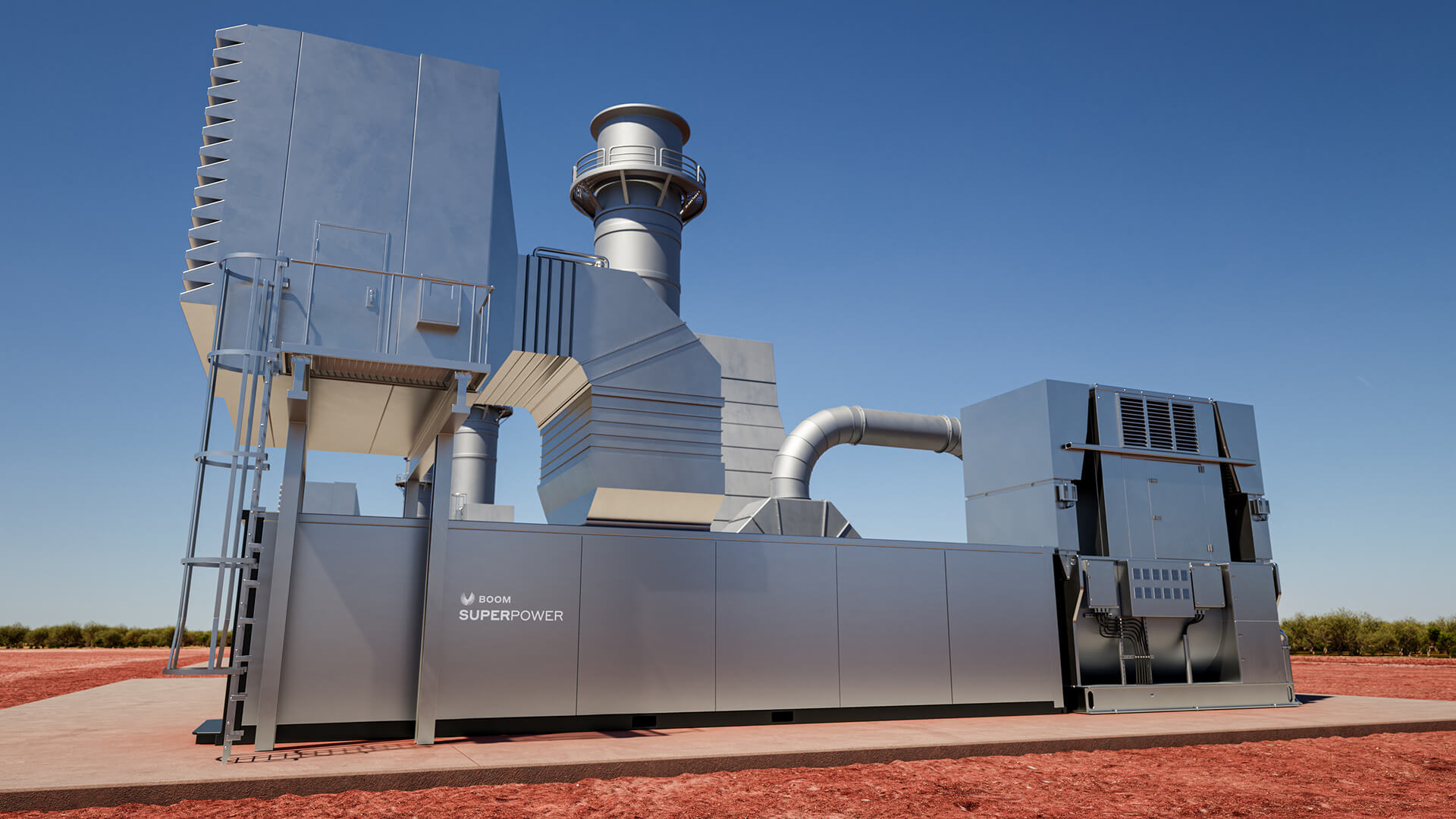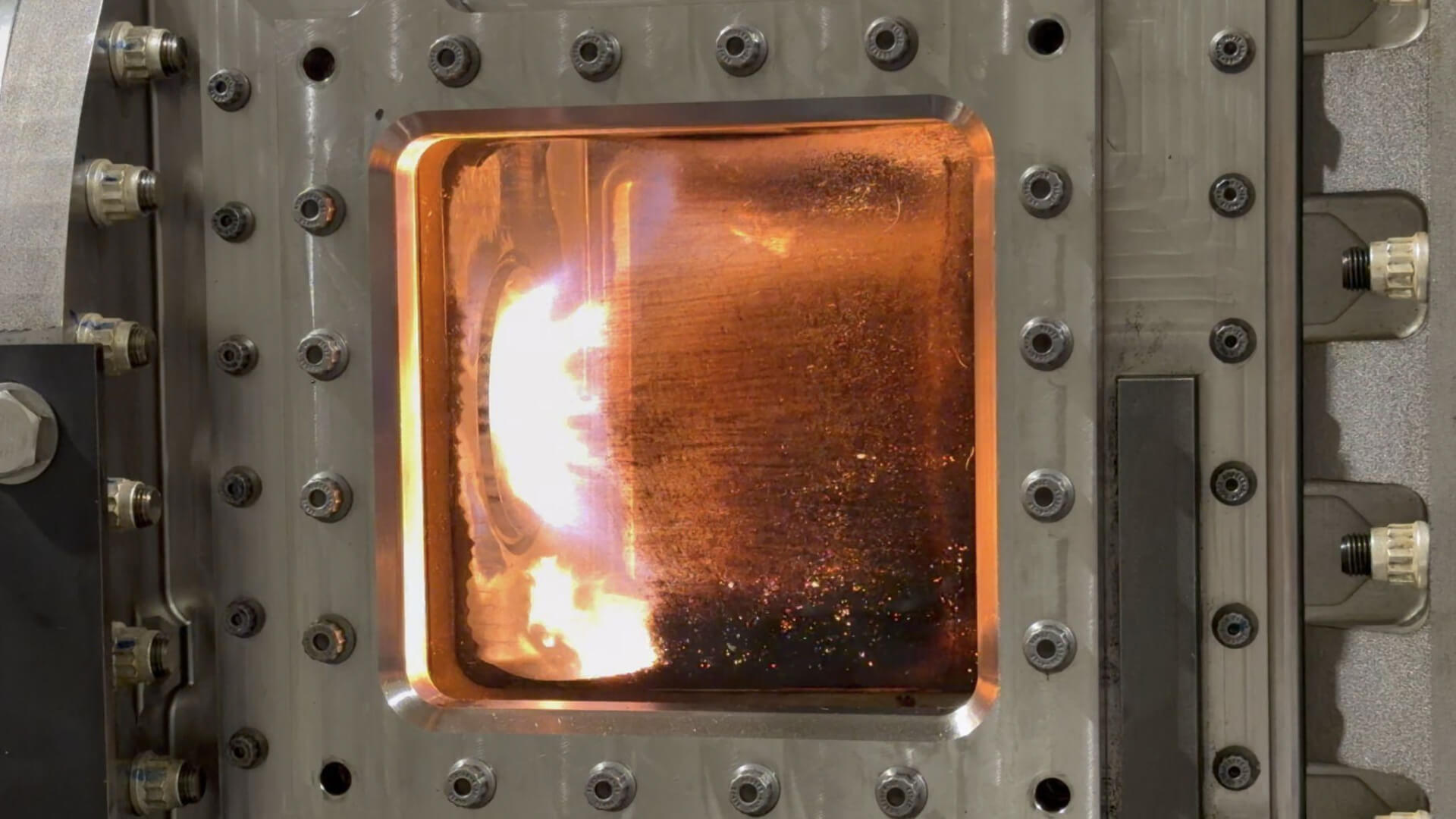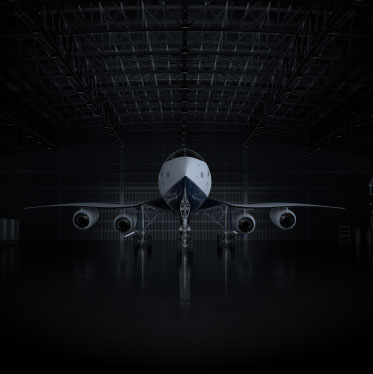If you looked at an image of XB-1, Boom’s demonstrator aircraft, could you identify the location of systems such as flight controls, electrical, hydraulics and avionics? With some luck, you might point to the systems bay. Recently bonded into the fuselage, the systems bay is the central hub of XB-1. It houses these vital systems and several more.
Located 8 feet behind the cockpit, the cylinder-shaped systems bay is compact, weighing 52 pounds and measuring 74 inches long (about 6 feet) by 46 inches wide (almost 4 feet). As the “nerve center” of the aircraft, it distributes data and pilot commands from the cockpit to the rest of the aircraft, as well as ground stations.
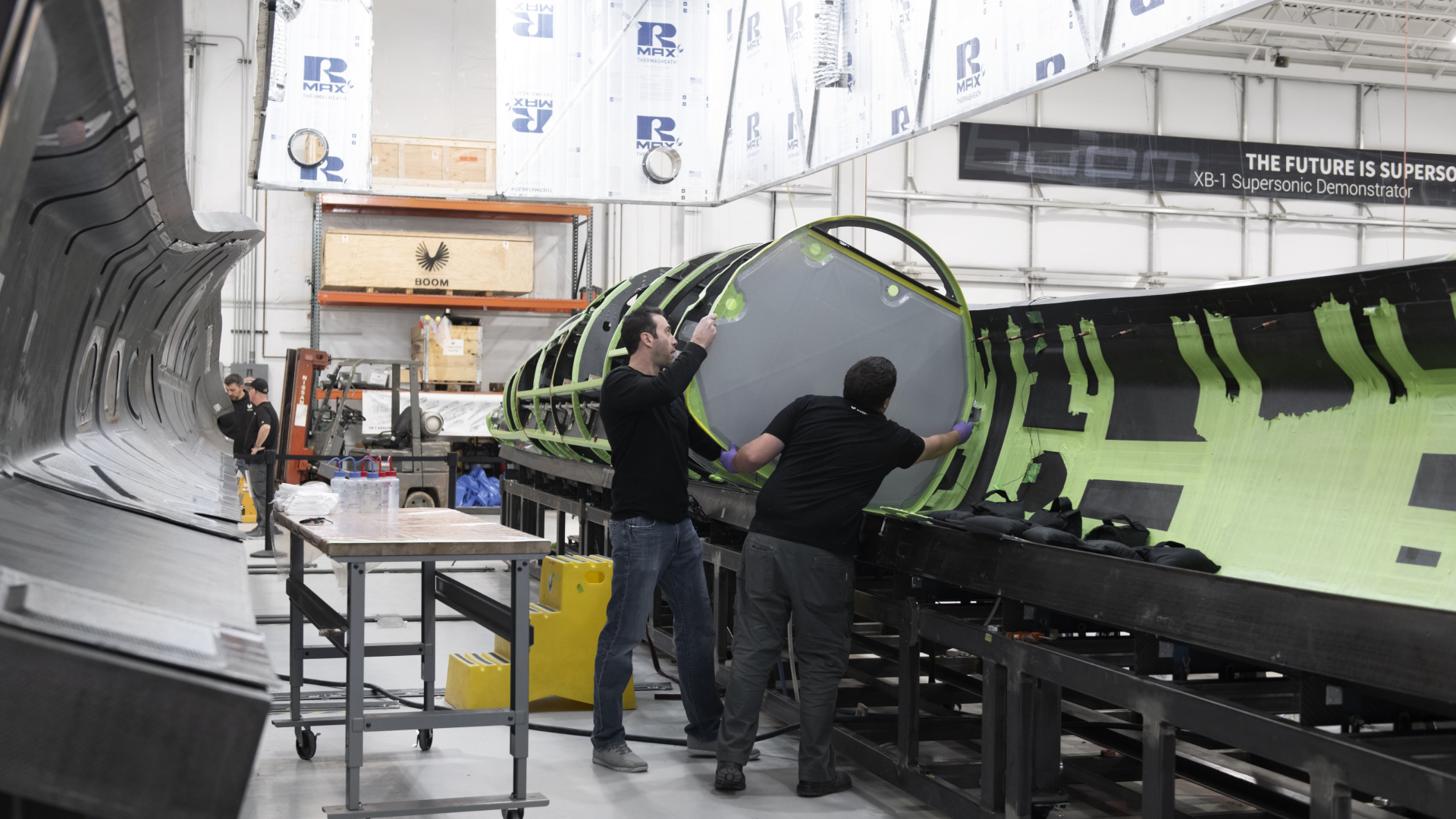
Despite its relatively small size and weight, bonding the systems bay into the fuselage required patience and precision, and a dress rehearsal for the entire team. Like any bonding event, there was no room for error. The viscosity of the adhesive requires painstaking accuracy. Once contact is made, few options exist to correct the position.
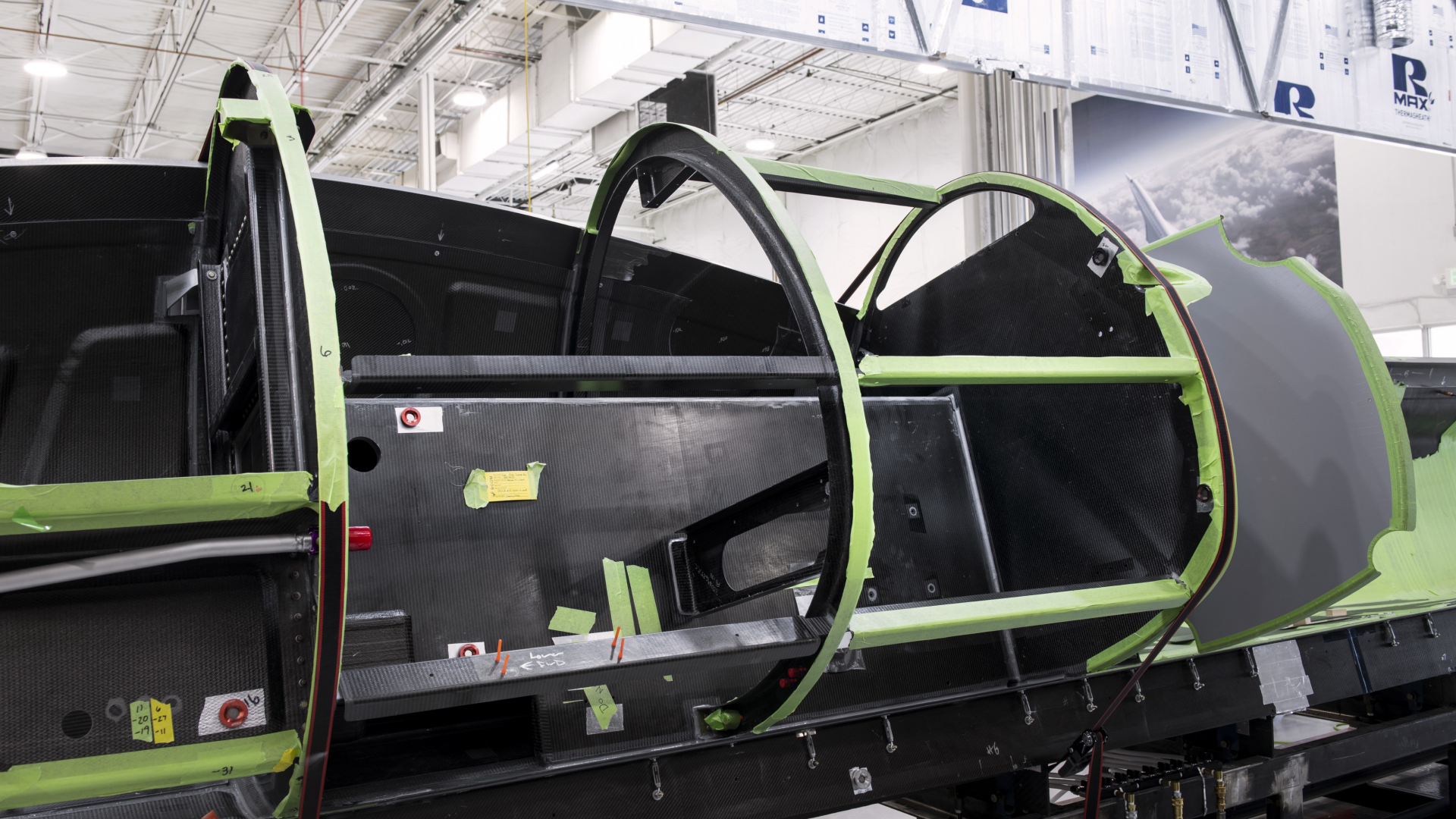
On bonding day, the team worked together in synchronicity, jigging equipment, prepping and mixing adhesive, and applying and filleting the adhesive along the bond lines. In spite of tight fits and long reaches, the team accessed all areas required. The team then applied approximately 900 pounds of force to make the bond. To apply this amount of force, the team used ratchet straps and slowly squeezed the parts together, similar to how an anaconda squeezes its prey.
The bond cured overnight in Boom’s in-house oven and was tested the next morning, marking another key milestone in XB-1’s journey to first flight.
Built with room to provide access for future maintenance, XB-1’s systems bay is large enough for a 10-year-old to climb inside—and just big enough for a small adult to fit their torso through an access point. Future technicians can reach inside to conduct tests on systems such as environmental control systems, which converts pressurized air into cool air for the cockpit.
XB-1’s build continued at a rapid pace the following day with the bonding of the fuel bays, located immediately behind the systems bay. With the completion of these bonding events, Boom’s experimental aircraft is rapidly coming together, bringing XB-1 ever closer to first flight.

